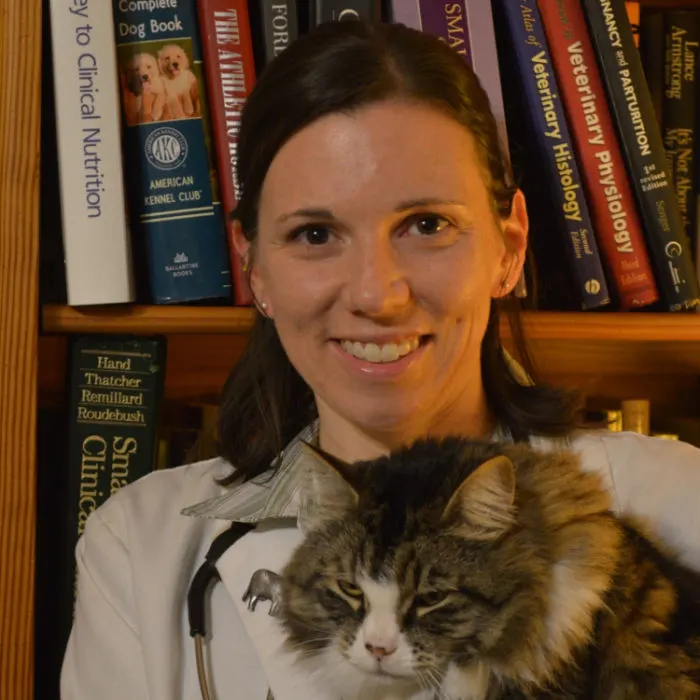The Flemish Giant rabbit is one enormous bun, as their name suggests. They stand 2.5 feet (76.2 cm) tall and, at maximum weight, can be 12 – 20 pounds (5.4 – 9 kg), making them officially the largest rabbit breed in the rabbit world.
In comparison to tiny and medium-sized dogs, they are about the same size. Imagine one of these majestic creatures hopping around your house!
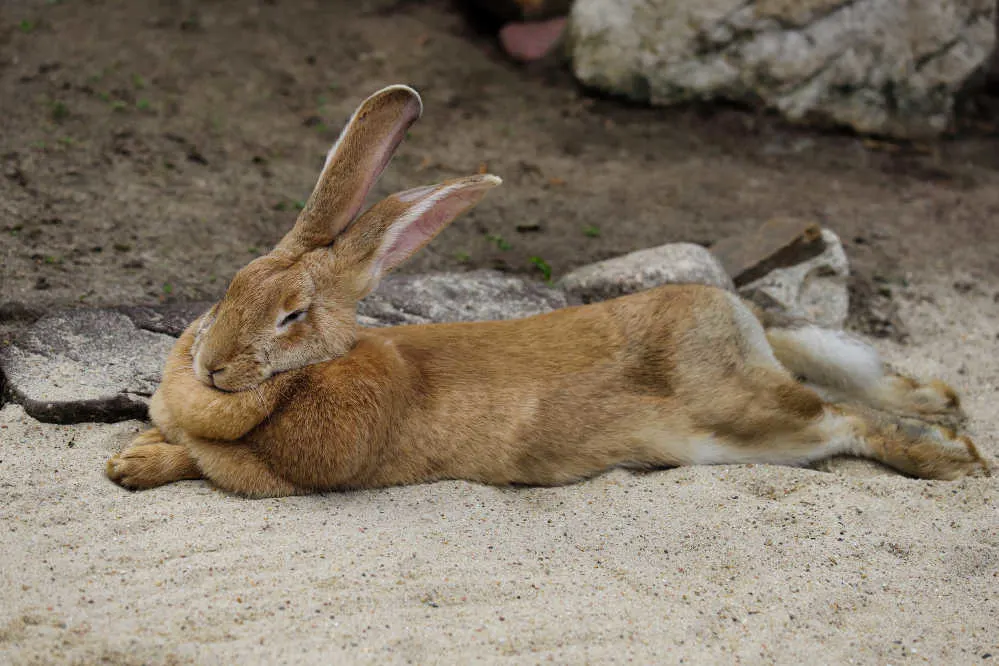
The Flemish Giant rabbits’ great size and docile nature make them a popular rabbit breed. These cute rabbits were once native to Belgium, but are now sadly endangered in the wild. Today, they are more common among American rabbit owners.
It is understandable why someone would want to adopt this remarkable and endearing creature. You might wonder, though, how long do Flemish rabbits live?
Because of their size, lifespan, and disposition, the Flemish Giant is frequently referred to as the “king of rabbits.” But how do you treat your bun like royalty so they can live long lives? Let’s hop into the life of Flemish Giant bunnies.
How long do Flemish Giant rabbits live?
Flemish Giants typically live for between eight and ten years. However, many barely reach the age of five due to health complications.
A Flemish Giant rabbit would also definitely perish in the wild. They have been kept as pet rabbits for far too long and wouldn’t stand a chance as wild rabbits. Despite their size, they are still prey animals and can be targeted by wolves, foxes, and coyotes.
Thus, it’s best to keep them as house rabbits — especially if wild foxes are running around your home. Health, diet, exercise, and whether they are kept indoors or outdoors can shorten or extend these gentle giants’ lifespan.
Flemish Giant rabbit health concerns
This breed of rabbits has several health concerns that, if not addressed at once, could impact their long-term health. They could be a little more challenging to care for than other smaller breeds due to their large size and additional health needs.
Yet, if you care for them properly and ensure their nutritional requirements are met, they can live well beyond ten years.
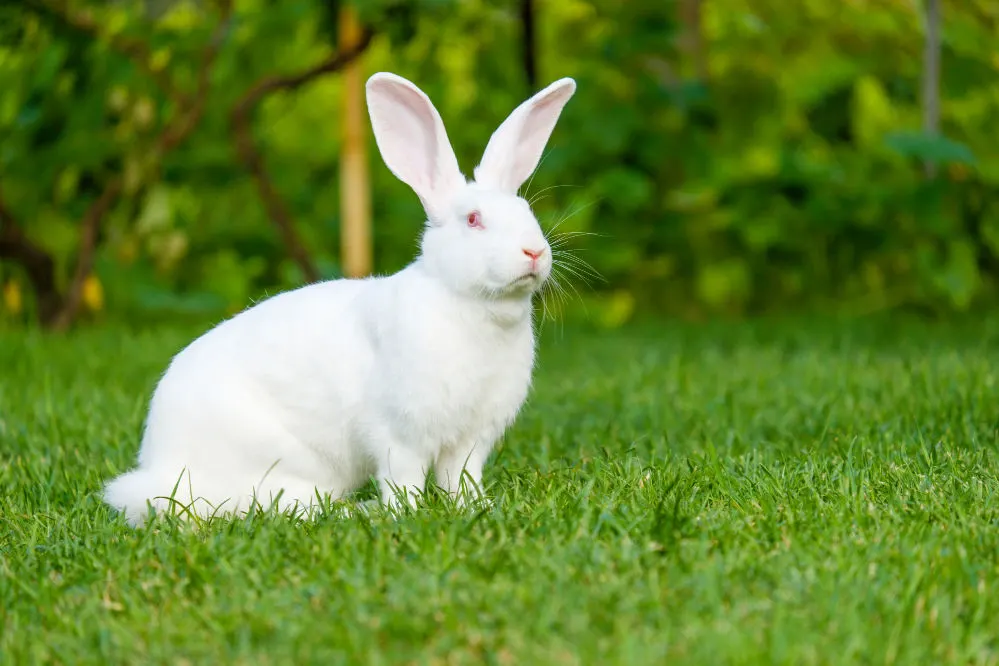
Flemish Giant rabbits are typically in good condition, and, with routine medical attention, they can live a long, happy life. While being in better health than many other breeds, they could nevertheless experience a few health problems. Some common diseases include:
GI stasis
Gastrointestinal stasis is a condition where the digestive process in the body slows down or stops entirely. Stress, dehydration, or an underlying medical condition may be to blame.
If not addressed, GI stasis can obstruct your rabbit’s intestines, which can be remedied easily if discovered early. Symptoms include lethargy, appetite loss, and a lack of healthy fecal pellets.
Heatstroke
Flemish Giant rabbits are more prone to overheating in hot weather because of their size and thick fur. They must be kept in a slightly cool atmosphere with minimal moisture and humidity to keep them from overheating.
They are also highly vulnerable to heat exhaustion or heat stroke inside the house due to their enormous size and thicker fur.
Move your pet rabbit to a cooler spot immediately if you see them breathing too heavily, experiencing excessive salivation, or notice their ears turning red. A cooling pad is a great option to let them beat the heat.
Spondylosis
Older Flemish rabbits frequently develop spinal spondylosis. The spine suffers from spondylosis deformans, a degenerative, non-inflammatory disorder. It causes non-cancerous tumor-like growths (or osteophytes) to develop in the bunny’s body, most frequently in the lower spine.
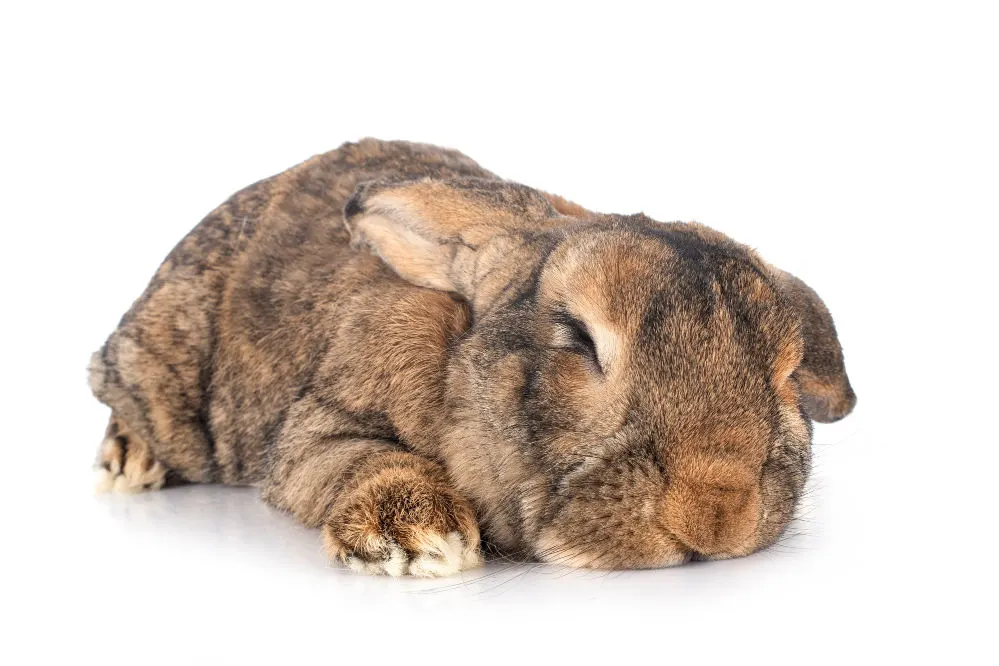
Your fluffy friend may experience pain and discomfort as a result. They may appear sluggish, hobble on their hind legs, and be covered with feces and urine.
Taking your rabbit to the veterinarian as soon as possible is crucial because this disease is manageable with medicine that will help ease your bunny’s pain.
Sore hocks
The sole of the rabbit’s foot becomes rough and inflamed when they have pododermatitis or sore hocks. Obesity, unsuitable floorings such as wire floors, the loss of foot fur, and skeletal issues like arthritis can all contribute to this.
It is crucial to use thick, soft bedding and to regularly check the hock/feet areas because these conditions can advance if not identified and treated early. If a rabbit is exposed to unsanitary conditions or has a foot injury that is left untreated, several problems may develop from infection.
If these sores are left untreated, they may spread to the body’s deeper tissues and harm the muscles or neurological system. This cannot be undone. With these rabbits, it is crucial to ensure that their pens are spotless.
Malocclusion
The common word for when your teeth are not correctly aligned is malocclusion. Since rabbit teeth never stop growing, a misaligned bite can cause them to overgrow and prevent them from wearing down.
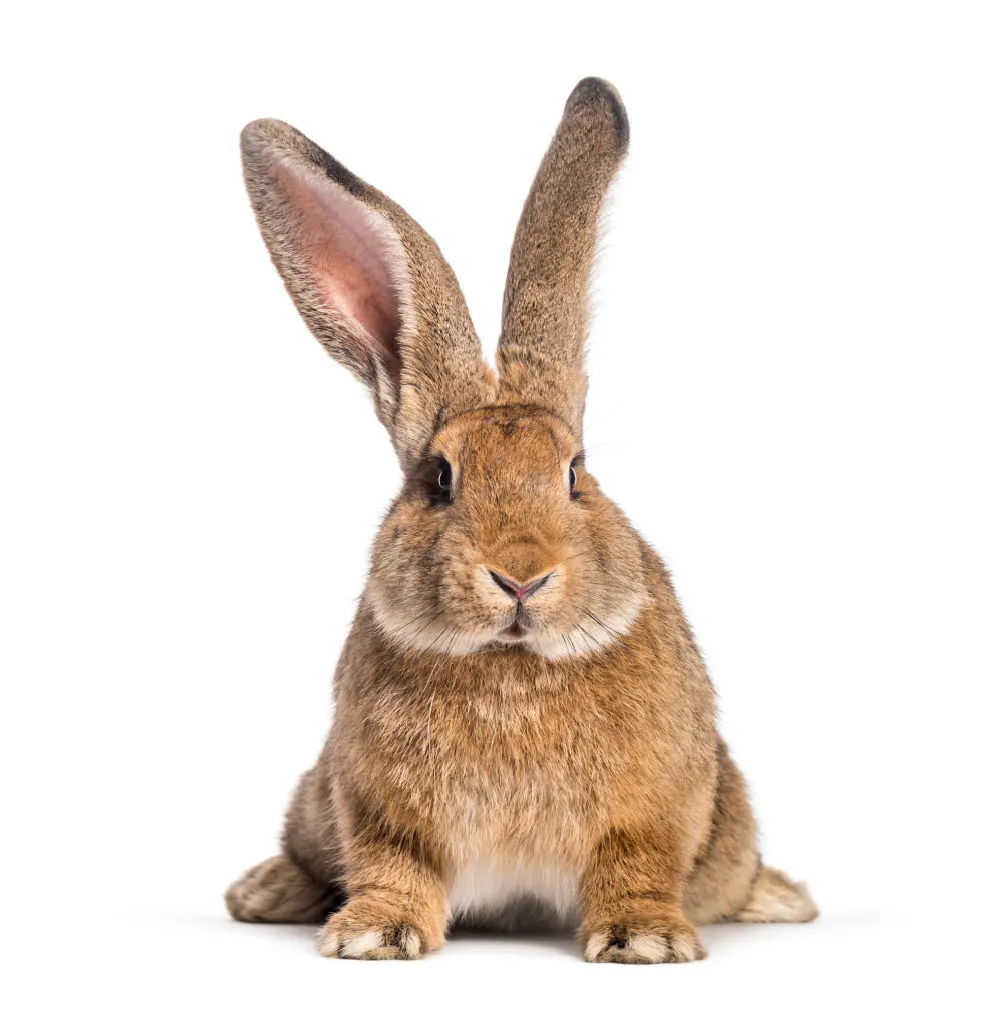
This can cause diet issues as they will struggle to eat food. Regular dental exams are crucial as a result.
Uterine cancer
The most prevalent type of cancer in rabbits is uterine cancer. It affects up to 60% of female rabbits older than three. Although treatments are available, the rabbit’s uterus must typically be surgically removed.
If you have female Flemish Giant rabbits who are not breeding, have them fixed immediately because keeping a female bunny unspayed can encourage uterine cancer.
Do larger rabbits have shorter lifespans?
Purebred rabbits often live shorter lives than those of mixed breeds — a rabbit’s lifetime is significantly influenced by its breed and pedigree. It is well known, nonetheless, that larger species of rabbit often have shorter lifespans than smaller rabbits.
Larger breeds typically live shorter lives than bunnies of a standard size, and small breeds typically live the longest of all. However, the best predictor of a long lifespan is the level of care you provide your rabbit.
By closely monitoring your rabbit’s diet and exercise, you can attempt to prolong its life. If you plan to breed them, restrict breeding to bunnies of the same color, as Flemish rabbits of different colors may breed and produce offspring with various health issues.
How can you extend your Flemish Giant’s lifespan?
Giant Flemish rabbits make great pets due to their calm, kind demeanor. Although these bunnies fit into practically any home and can live up to quite a few years, many regrettably pass away much sooner due to various illnesses and health issues.
There are ways to extend their lifespans, though, including knowing the proper care and diet that a Flemish Giant needs to encourage longevity.
Care
The gentle and kind Flemish Giant rabbits make wonderful pets. They’re excellent companions for small children and animal enthusiasts because of their enormous size, fluffy bodies, and eagerness to be petted by their owners.
Be cautious that this breed’s immense stature leaves them vulnerable to suffering back or limb injuries if they are dropped from high places. The same goes if they are handled carelessly since the extra weight can make unexpected movements difficult to control.
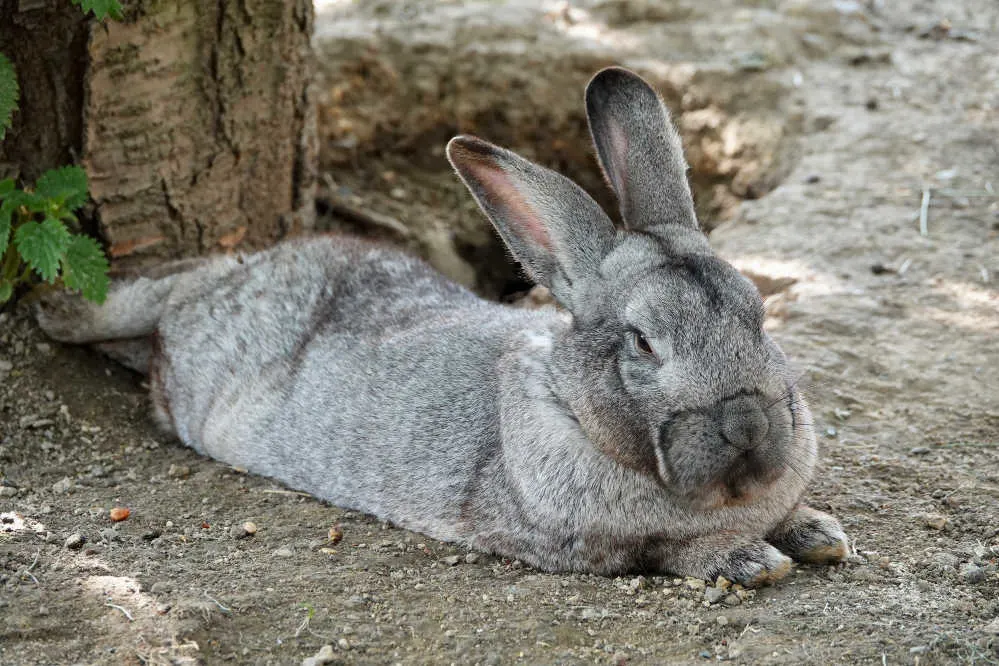
Although they are docile giants, you should be warned that they may bite or scratch you if you handle them too much or when they appear to be in distress. Give them room if they seem hostile until they get calm. Besides that, they are wonderful family pets who will sit on their favorite person’s lap anytime they feel like it.
Enclosures
Make sure a Flemish rabbit has a suitable enclosure with enough room to jump around inside. You can create an indoor pet enclosure with a silk sheet or thick wool rug covering the floor to give them a large area in which to move around.
In addition to preventing the development of sore hocks, which may be extremely painful for this animal, this considerably lowers friction between the animal’s feet and the ground and also gives them proper footing so they won’t slip and injure themselves.
To prevent them from destroying their bedding, teach your Flemish Giant bunny to use a litter box. Be sure to replace your rabbit’s bedding if it is damp. Spot cleaning the cage is advised since these rabbits wander throughout the house and track in dirt and debris that they may transfer to their bedding, which will accumulate over time.
Grooming
Flemish Giant rabbits have plush, thick fur. While this is an excellent quality, it also necessitates moderate grooming with a brush at least once a week. If not, they’ll eat too much fur when grooming themselves and get an intestinal blockage or “fur block,” as it’s known.
They can also get ear mites, and brushing is a good way to spot them. Due to their size, Flemish Giant rabbits also have big nails. To prevent sore hocks, these will require occasional clipping. Invest in a good-quality grooming kit if you decide to get one of these lovable creatures.
Food and diet
Flemish Giant rabbits require up to ten times as much food as typical rabbits since they are up to ten times larger. If you’re considering getting a Flemish Giant, you’ll need to buy food frequently to keep them satiated.
They should consume mainly hay as other rabbits do. Timothy hay is an incredibly nutrient-dense option that can be a key part of a healthy diet. It is advised to purchase this in bales to save money, time, and effort.
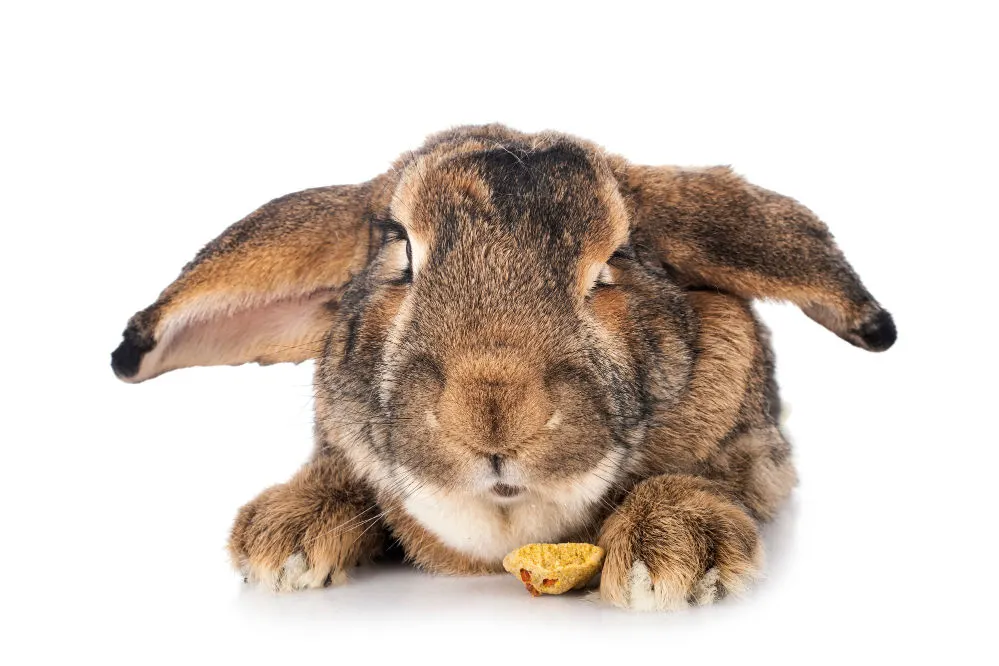
To avoid dehydration, your rabbit also requires continuous access to fresh water. Make sure they have a big water bottle to give them constant access to fresh, clean water.
Be sure that less than one-third of your bun’s food consists of protein rabbit pellets, and refrain from rewarding them with too many snacks. For additional minerals and vitamins, it is also advised to feed them fresh vegetables that have been cut into smaller pieces.
You can give them two cups of finely chopped vegetables, such as bell peppers, carrot tops, spinach, bok choy, leaf lettuce, and fennel leaves, for every 6.6 pounds (3 kg) of their body weight.
Moreover, you can give them chunks of fresh fruit like bananas, apples, mangoes, cherries, and pears. Apples should not have seeds included because they can be poisonous to rabbits.
Treat fruit like dessert and only let them consume small amounts of it. Feeding these rabbits a lot of natural carbohydrates can lead to weight gain and digestive system problems. Fruit pieces can be used as rewards while training rabbits because they enjoy sugar.
Be aware that it will take some time for your rabbit to grow used to any new foods you plan to feed them, such as fruits or vegetables. Due to their sensitive and sophisticated digestive systems, rabbits are less able to adjust to novel diets than other animals.
Once they are accustomed to each item individually, feed them a mixture of several fruits and vegetables rather than a big quantity of a single food.
Exercise
Flemish Giant rabbits require a large dwelling area and lots of exercise space. This implies that you will need to frequently allow them out of their pen so they may play, stretch, and investigate. Make sure the area is rabbit-proof, though.
Space and housing
These big bunnies require a large enclosure because they are much larger than other types of rabbits. A Flemish Giant rabbit needs a cage at least 3 by 4 feet (0.9 by 1.2 m) in size. Because they can’t move around as readily in smaller enclosures, they may become anxious if their cage is too small.
When they are one and a half years old, Flemish Giant rabbits usually reach their full size. They can also jump up to three feet high. Therefore their enclosure must be high enough to prevent them from jumping out, or have a roof.
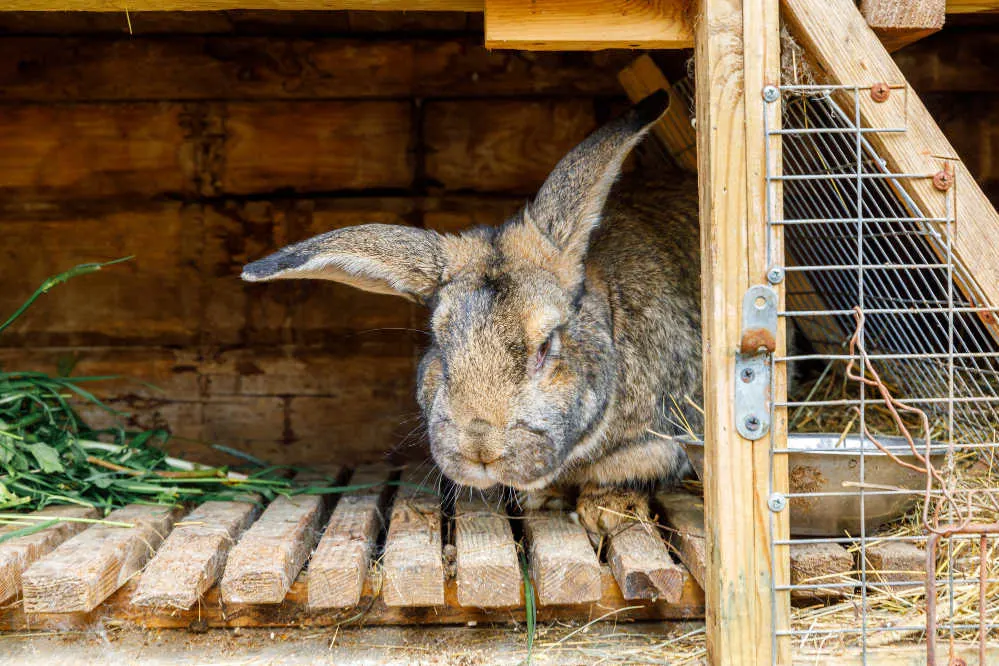
Some people give their bunnies their own room in the house, complete with bedding and a litter box. You can read this guide on rabbit houses to learn more about what home to give your fluffy friend, including the minimum cage size you should consider.
Due to their size, Flemish Giant rabbits have the disadvantage of eating more and producing more waste. So you will need to clean their dwelling space more regularly than you would for a small bun.
Final thoughts on the Flemish Giant’s lifespan
The Flemish Giant rabbits are larger than life, both physically and in personality. These puppy-dog bunnies make fantastic pets, but like any animal, you should be sure you can provide for them for their entire life before getting one.
The average lifespan of Flemish Giant rabbits is eight years. You can help them live to this age and possibly even longer by taking extra care of them. Simply provide them with a tidy, large house, regular freedom to wander, and an abundance of wholesome food and vet visits when necessary. And, of course, be sure to give them lots of love and attention.
If this breed is not for you, however, there are many other rabbit breeds out there. There’s sure to be one of them that will tickle your fancy.
Steph Dyson is a travel journalist by trade but a lover of all small pets. She’s been a pet mum to everything from gerbils to guinea pigs, rabbits to hamsters, and fish to dogs of all shapes and sizes. She wants to share her years of experience with small pets and make Small Pet Guides the go-to website for pet owners seeking information and care advice.

